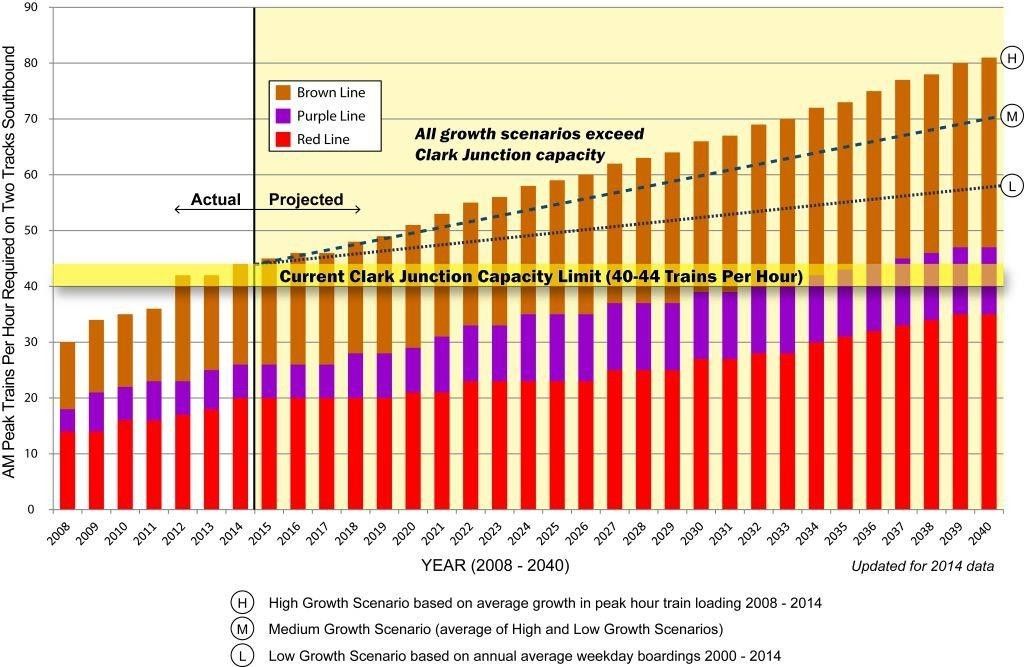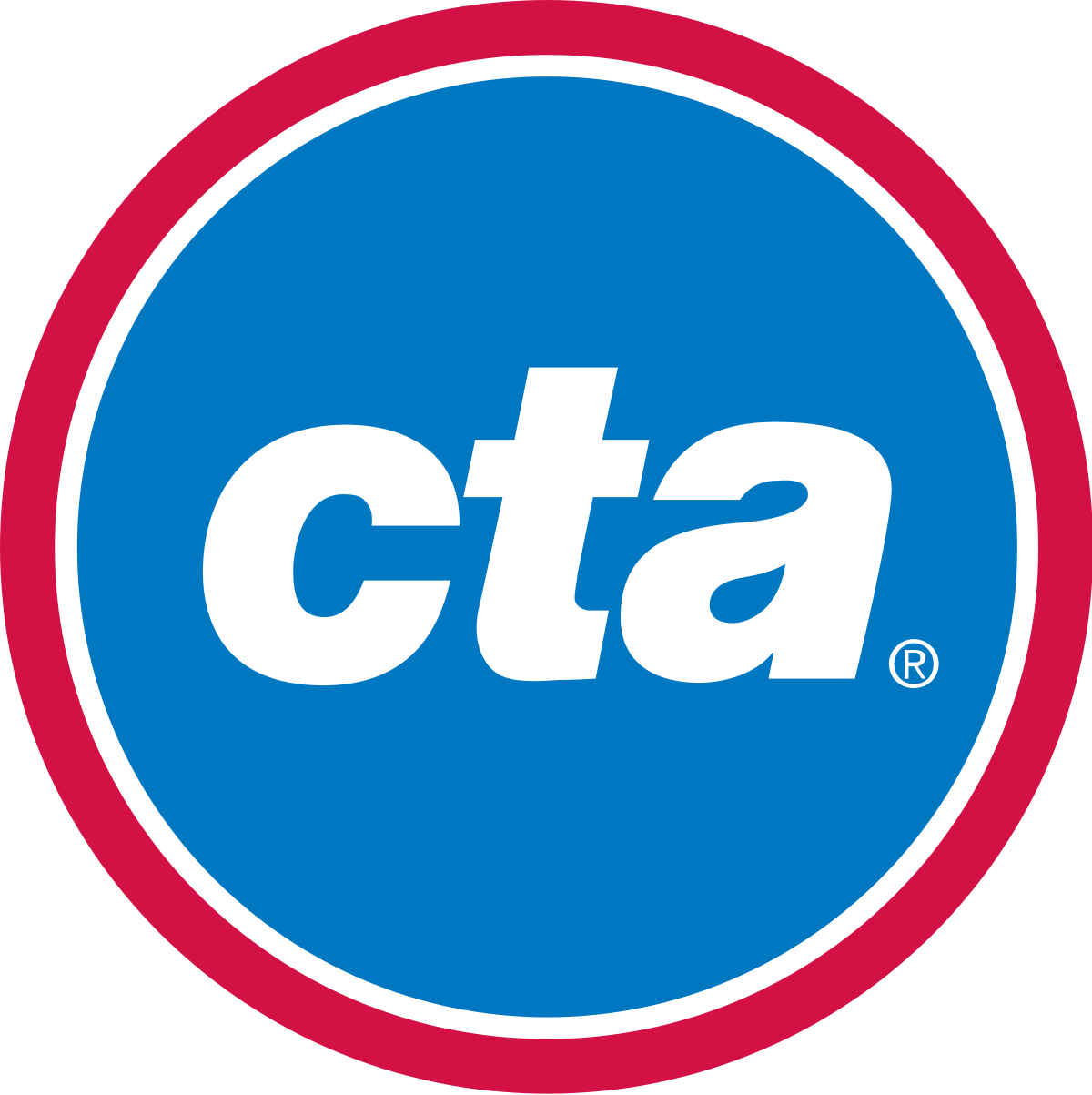Talk to us
Have questions? Reach out to us directly.
Red & Purple Modernization Program
View allRebuilding vital infrastructure for Chicago’s future
The Red and Purple Modernization (RPM) corridor is a 9.6-mile stretch of track that was built close to a century ago—much of it in 1924, when Calvin Coolidge was U.S. President and the Wrigley Building had just been constructed. Most of this infrastructure is at the end of its useful lifespan. Frequent maintenance to repair tracks and remove slow zones is costly and hinders service.
RPM Phase One:
Significant ridership, population growth
The Red Line is now Chicago’s busiest ‘L’ line, serving some of the most densely populated neighborhoods in the country, and the number of riders along this corridor is only growing. Morning and evening rush period ridership increased by nearly 40 percent over a five-year period.
CTA needs to increase service on the Red Line to serve more riders. However, with current infrastructure constraints, the Red Line has reached capacity, which means we cannot add more trains during rush periods. If nothing is done, CTA will continue to be unable to add more trains to accommodate riders, trains will become more overcrowded, and passengers wait times will increase.

RPM: Meeting future ridership demand
In order to completely rebuild and modernize the stations, tracks and infrastructure along this corridor, we must be able to improve the efficiency of our operations to be able to increase the number of trains to meeting ridership demand today and in the future.
Rebuilding and modernizing the Red Line stations alone will not be enough to meet our future capacity needs. The proposed Red-Purple Bypass is also necessary to increase train service over the next 60 to 80 years.
RPM Phase One
The comprehensive work that will be performed under the RPM program is scheduled to be completed in phases, which allows us to make the greatest number of improvements while minimizing impacts on riders and the surrounding communities.
Phase One includes two main components:
Scope
RPM Phase One will completely rebuild the Lawrence, Argyle, Berwyn and Bryn Mawr stations and all the tracks and support structures for more than a mile adjacent to the stations. The stations will be accessible for the first time and include wider platforms, better lighting and modern amenities. The project will also construct a Red-Purple Bypass north of Belmont station trains to modernize the century-old Clark Junction where Red, Purple and Brown Line trains currently intersect. The bypass, which will carry northbound Brown Line trains up and over Red and Purple Line tracks, will eliminate the need for trains to stop and wait for other trains to cross, thereby allowing CTA to significantly increase the number of trains it runs along the Red Line -- reducing overcrowding and meeting growing demand for transit service.
How will we pay for it?
RPM Phase One is funded by $957 million from federal Core Capacity Funds that was formally approved by a Full Funding Grant Agreement with the Federal Transit Administration (FTA) on Jan. 9, 2017. The remaining Phase One funding includes a federal $125 million Congestion Mitigation and Air Quality Improvement (CMAQ) grant from the Chicago Metropolitan Agency for Planning (CMAP), $622 million in Transit TIF funds from the City of Chicago and CTA financing.
Program History
The RPM Program has evolved through a series of studies and public outreach processes that have shaped the development of the program over time.

2009-2010: CTA conducted a vision study between fall 2009 and fall 2010 to understand the public’s priorities and concerns, conduct an existing conditions analysis, and frame project alternatives. The analysis helped define the purpose and need and included a high-level evaluation of potential improvements to the corridor. The process included four public meetings attended by over 300 people, a website, a comment period, and a direct mail survey sent to over 11,000 residents and businesses along the corridor.
2011: In January 2011, the National Environmental Policy Act (NEPA) scoping process began. The purpose of this process was to inform the public about the project and gather input on the scope of the environmental studies, draft purpose and need statement, and alternatives to be evaluated. Four public scoping meetings provided the public with an opportunity to comment on the project purpose and need, alternatives to be considered, and issues and areas of concern to be considered in the Draft Environmental Impact Statement for the entire 9.6-mile RPM corridor.
2012: CTA held two community update meetings in early 2012, which allowed attendees to learn about refined alternatives for the RPM corridor based on public scoping, review project information, and clarify their understanding of the project and environmental process.
2013: During 2013, CTA conducted additional research and a conceptual design process to look at ways to further minimize environmental impacts. In late 2013, FTA and CTA developed a tailored approach for phased improvements to the RPM corridor.
2014: CTA announced the RPM Phase One projects to the public in April 2014. Throughout spring and summer 2014, CTA held a number of focused community group meetings and public open houses. These meetings were conducted to gather feedback from the public on the proposed improvements and determine areas of concern to be analyzed and documented within the RPM Phase One Environmental Assessments (EAs).
2015: CTA held public hearings for the Lawrence to Bryn Mawr Modernization Project and Red-Purple Bypass Project EAs in May and June 2015, and established a 30-day public comment period to accept comments for each project. Based on a review of all comments received, FTA will issue a final NEPA environmental decision document for each RPM Phase One project. This finding will guide future implementation of these projects. FTA issued a Finding of No Significant Impact for the Lawrence to Bryn Mawr Modernization Project on October 2, 2015.
2016: In 2016, CTA formally applied for federal funding and also secured local funding through the Transit TIF.
2017: On Jan. 9, 2017, CTA signed the Full Funding Grant Agreement with the Federal Transit Administration (FTA) that is the final step in securing the funding needed for the $2.1 billion first phase of the RPM project.
2018: CTA began property demolition and advance utility relocation work in preparation for construction of the RPM Phase One project. In December 2018, CTA awarded a contract to design and build the project to Walsh-Fluor Design-Build Team, following an 18-month Request for Qualifications (RFQ) and Request for Proposals (RFP) process.
2019: CTA in February 2019 issued a Notice to Proceed to Walsh-Fluor to begin work on the project. CTA broke ground on the Red-Purple Bypass in October 2019 and in December 2019 began "pre-stage" preparatory trackwork for the Lawrence to Bryn Mawr corridor, ahead of new station and track construction starting in 2021.
2020: CTA continues to build the Red-Purple Bypass rail bridge. Simultaneously, the CTA continues performing extensive "pre-stage" work to the Red and Purple Line tracks to allow the CTA to provide Red and Purple Line service on two tracks instead of the usual four tracks, because CTA will be rebuilding two tracks at a time along with new stations between 2021-2024.
Image Gallery
Talk to us
Have questions? Reach out to us directly.

